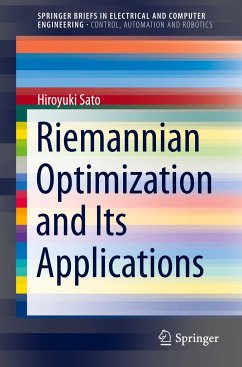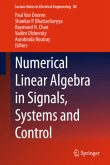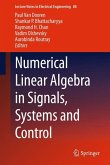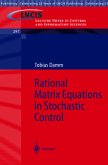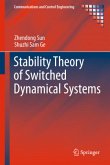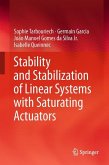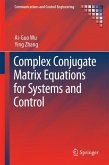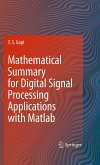This brief describes the basics of Riemannian optimization-optimization on Riemannian manifolds-introduces algorithms for Riemannian optimization problems, discusses the theoretical properties of these algorithms, and suggests possible applications of Riemannian optimization to problems in other fields.
To provide the reader with a smooth introduction to Riemannian optimization, brief reviews of mathematical optimization in Euclidean spaces and Riemannian geometry are included. Riemannian optimization is then introduced by merging these concepts. In particular, the Euclidean and Riemannian conjugate gradient methods are discussed in detail. A brief review of recent developments in Riemannian optimization is also provided.
Riemannian optimization methods are applicable to many problems in various fields. This brief discusses some important applications including the eigenvalue and singular value decompositions in numericallinear algebra, optimal model reduction in control engineering, and canonical correlation analysis in statistics.
To provide the reader with a smooth introduction to Riemannian optimization, brief reviews of mathematical optimization in Euclidean spaces and Riemannian geometry are included. Riemannian optimization is then introduced by merging these concepts. In particular, the Euclidean and Riemannian conjugate gradient methods are discussed in detail. A brief review of recent developments in Riemannian optimization is also provided.
Riemannian optimization methods are applicable to many problems in various fields. This brief discusses some important applications including the eigenvalue and singular value decompositions in numericallinear algebra, optimal model reduction in control engineering, and canonical correlation analysis in statistics.
"The author successfully presents all of this varied material using a consistent and modern notation. ... The book meticulously provides references with a comprehensive list at the end. It includes information about software libraries that implement Riemannian optimization in MATLAB, Python, R, C++, and Julia. Both the proofs and calculations in the examples are given with sufficient detail using a consistent notation." (Anders Linnér, Mathematical Reviews, October, 2022)
"The book is a very nice introductory reference for students, engineers, and practitioners to get started in the field of Riemannian optimization. ... A highlight of the book is that it reviews the most important work in the field and also mentions current research topics. Thus, I also highly recommended it to researchers getting a broad overview of what is currently studied in the field, without being too detailed or theoretical." (Lena Sembach, SIAM Review, Vol. 64 (2), June, 2022)
"The book is a very nice introductory reference for students, engineers, and practitioners to get started in the field of Riemannian optimization. ... A highlight of the book is that it reviews the most important work in the field and also mentions current research topics. Thus, I also highly recommended it to researchers getting a broad overview of what is currently studied in the field, without being too detailed or theoretical." (Lena Sembach, SIAM Review, Vol. 64 (2), June, 2022)

